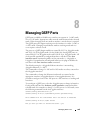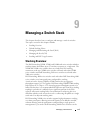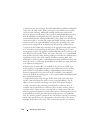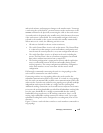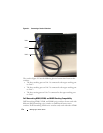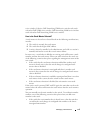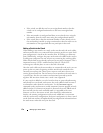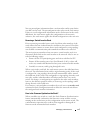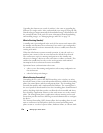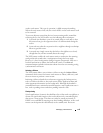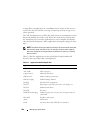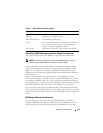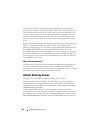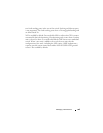
176 Managing a Switch Stack
• If the switch you add does not have an assigned unit number, then the
switch sets its configured unit number to the lowest unassigned unit
number.
• If the unit number is configured and there are no other devices using the
unit number, then the switch starts using the configured unit number.
• If the switch detects that the maximum number of units already exist in
the stack making it unable to assign a unit number, then the switch sets its
unit number to
unassigned
and does not participate in the stack.
Adding a Switch to the Stack
When adding a new member to a stack, make sure that only the stack cables,
and no network cables, are connected before powering up the new unit. Stack
port configuration is stored on the member units. If stacking over Ethernet
ports (N4000 only), configure the ports on the unit to be added to the stack as
stacking ports and power the unit off prior to connecting the stacking cables.
Make sure the links are not already connected to any ports of that unit. This is
important because if STP is enabled and any links are UP, the STP
reconvergence will take place as soon as the link is detected.
After the stack cables on the new member are connected to the stack, you can
power up the new units, beginning with the unit directly attached to the
currently powered-up unit. Always power up new stack units closest to an
existing powered unit first. Do not connect a new member to the stack after it
is powered up. Also, do not connect two functional, powered-up stacks
together. Hot insertion of units into a stack is not supported.
If a new switch is added to a stack of switches that are powered and running
and already have an elected stack master, the newly added switch becomes a
stack member rather than the stack master. Use the boot auto-copy-sw
command on the stack master to enable automatic firmware upgrade of newly
added switches. If a firmware mismatch is detected, the newly added switch
does not fully join the stack and holds until it is upgraded to the same
firmware version as the master switch. After firmware synchronization
finishes, the running configuration of the newly added unit is overwritten
with the stack master configuration. Stack port configuration is always stored
on the local unit and may be updated with preconfiguration information from
the stack master when the unit joins the stack.




